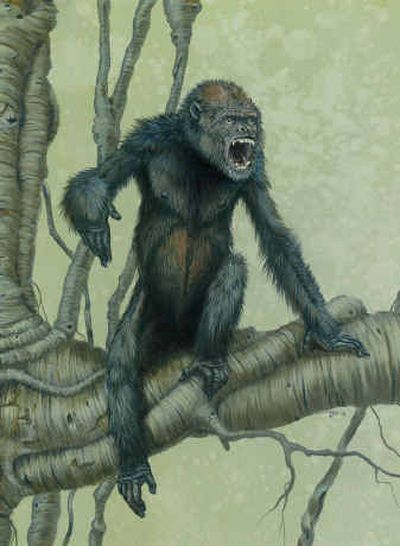Remains of ancient ape found in Spain

Spanish researchers say they have found the remains of an extinct species of great ape that may have been the last ancestor humans shared with gorillas, chimpanzees and orangutans.
Pierolapithecus catalaunicus ate mostly fruit, climbed trees in an upright posture and, at 77 pounds, was a little smaller than a chimpanzee.
Salvadore Moya-Sola and colleagues at the Miguel Crusafont Institute of Paleontology in Barcelona say the creature’s ancestors probably came from Africa, where primates most likely originated.
Archaeologists were just beginning to dig near Barcelona last year when a bulldozer churned up the tooth of what they believe was a male specimen that lived about 13 million years ago. They soon uncovered one of the most complete primate skeletons from the period ever found, including parts of a skull, rib cage, spine, hands and feet.
The world’s great apes are thought to have evolved along with humans from a single ancestor that diverged from lesser apes, such as gibbons, millions of years ago. Modern humans didn’t emerge until 100,000 years ago.
Other recent fossil discoveries also are contenders for the title of common ape ancestor. But the Spanish researchers say in Friday’s issue of Science that theirs is the most likely candidate because it was shaped like the apes that came later. It had a wide and flat rib cage, stiff spine, flexible wrists and shoulder blades on its back that were meant for easy upright climbing.
“It has a lot of the modern features in its face and its skeletal structures,” Moya-Sola said.
Monkeys, by contrast, have more primitive skeletons, with narrower rib cages and shoulder blades on the sides of their ribs, a shoulder position similar to those in dogs.